|
This incoming Red-crowned Crane was photographed at the Akan Crane Center with the hand held Canon 300mm f/2.8 L IS II lens, 1.4X III TC, and the Canon EOS-1D Mark IV. ISO 400. Evaluative metering +1 stop off the snow: 1/3200 sec. at f/7.1 in Manual mode. Central Sensor/AI Servo Rear Focus active at the moment of exposure. Click here if you missed the Rear Focus Tutorial. Click on the image to enjoy a larger, more spectacular version. To learn what others thought of this image check out “Inbound 747.” |
Gear Evaluation: the Canon 300mm f/2.8L IS II
As regular readers know, I have–thanks to the kindness of the folks at Canon Professional Services (CPS)–especially Paul Ng, been field testing the same Canon 300mm f/2.8L IS II for more than two months. I first used it on my amazing Cheeseman’s Southern Oceans trip, then on the SW FLA IPT, and finally on the Japan IPT. It will be returned by Fed-X the afternoon that I get back to the office on March 13th. 🙂
I have long given the 300 f/2.8 lenses short shrift. In the original The Art of Bird Photography I wrote something to the effect that the 300 f/2.8s were favored by many of the world’s best raptor photographers but that I saw little need for one. In the all new follow-up, The Art of Bird Photography II (916 pages on CD only), I totally ignored these lenses but did include a few Homer eagle images made with one that I had borrowed from CPS. The images above and below show the incredible potential of the 300 f/2.8L IS lens/1.4X III TC as a flight photography combination.
|
This head shot of a point-blank fly-by Red-crowned Crane image was also created at the Akan Crane Center with the hand held Canon 300mm f/2.8 L IS II lens, 1.4X III TC, and the Canon EOS-1D Mark IV. ISO 400. Evaluative metering +1 2/3 stops off the snow: 1/2500 sec. at f/4 in Manual mode. Central Sensor/AI Servo Rear Focus active at the moment of exposure. Click here if you missed the Rear Focus Tutorial. Click on the image to enjoy a larger, more spectacular version. |
On my Antarctica trip the 300 IS II with the 2X III teleconverter served as my long lens (see the image immediately below) and I used it a lot with and without the 1.4X III TC both on landings and on Zodiac cruises. Carrying it on the long hikes was a pleasure when compared to the long lenses I am used to carrying…. I used the lens sparingly on the SW FLA IPT but my erstwhile assistant Tim Kaufman made a killer image of a Great Blue Heron in flight with a large southern whiting in its bill with it while toting the lens for me at Blind Pass Beach. You can see that spectacular image here.
|
This Macaroni Penguin preening its mate was photographed at Hercules Bay, South Georgia, with the tripod-mounted Canon 300mm f/2.8 L IS II lens, the 2X III teleconverter, and the Canon EOS-1D Mark IV. ISO 400. Evaluative metering -2/3 stop: 1/200 sec. at f/10 in Manual mode. This is one of my favorite images from the trip. The birds were so tame that I rarely if ever felt limited with my longest effective telephoto length of “only” 780mm (300mm X 2 X 1.3). An upper left-hand sensor was chosen manually: AI Servo Rear Focus active at the moment of exposure. Click here if you missed the Rear Focus Tutorial. |
When I sent the image above to Christopher Robinson, editor of Outdoor Photographer, as part of a submission for an article on pros’ favorite Canon lenses, he commented via e-mail, “By the way…your Macaroni Penguin image, in particular, is incredible. I think it shows the sharpness of that lens better than anything I’ve seen. It’s an awesome lens and in your hands one can see why it’s so highly prized.” And that with the 2X III TC!
|
That’s me hand holding the Canon 300mm f/2.8L IS lens with the 1.4X TC and the EOS-1D Mark IV body alongside the fishing pier at the eastern end of Sanibel, FL. Photo copyright and courtesy of Peter Kes. |
What’s To Like?
What can I say. The lens is incredibly sharp. Sharp wide open. Sharp edge to edge. Sharp with the 1.4X And yes, sharp with the 2X. When I do everything right–which is often with this lens in my hands–the images seem to leap off the computer screen. At A.B pounds, the lens is just light enough (5.19 pounds, 13% lighter than its predecessor) to hand hold for extended periods of time even though I have had some problems with my shoulders for the past few years. When Peter Kes made the image of me above we were photographing Red-breasted Mergansers swimming and diving. For more than two hours. I held the lens elevated for extended periods of time. When I got back to the motel and took off my sweatshirt I could barely lift my arms; I was very much in pain. It was sort of like what I did by swimming too many laps when my pool was finished…. By the next morning I was fine. On the sea eagle boat trips in Rausu I made sure to rest the lens on the gunnels when I was not actively photographing; having a nice neutral rest position when hand holding relatively heavy gear is always best.
With a maximum aperture of f/2.8, the lens is very fast. There were times on each trip that I was able to keep photographing in low light without going to crazy-high ISOs. Another benefit of all that speed is being able to work with either teleconverter and still have all AF points active. The lens is very versatile as it offers three focal lengths: 300mm, 420mm (with the 1.4X III TC), and 600mm (with the 2X III TC). I have not worked hand held with the 2X much but with enough shutter speed I am sure that competent folks would be able to create sharp action and flight images. For static work, however, it makes sense to be on a sturdy tripod like the Gitzo 3530 LS topped by a Mongoose M3.6, the latter was absolutely made for the 300 2.8 lenses.
|
This immature Whooper Swan head portrait was created at Lake Kussharo, Hokkaido, Japan with the hand held Canon 300mm f/2.8 L IS II lens, 1.4X III TC, and the Canon EOS-1D Mark IV. ISO 400. Evaluative metering +1/3 stop: 1/500 sec. at f/5 in Av mode. Central Sensor/AI Servo Rear Focus active at the moment of exposure. Click here if you missed the Rear Focus Tutorial. Click on the image to enjoy a larger, more spectacular version. When using shorter focal lengths than I normally do it is important for me to get low. That often means not being lazy, kneeling, sitting on the ground, and getting down, dirty, and prone. For this image I simply bent over a bit as the Whooper Swans are big birds. |
Idiosyncracies
All four of the Series II telephoto lenses have three Image Stabilization modes: IS 1, IS 2, and IS 3. Here’s what Canon has to say about each:
- IS Mode 1: Corrects vibrations in all directions. It is mainly effective for shooting still subjects.
- IS 2 Mode: Corrects vertical camera shake during following shots (i.e., panning) in a horizontal direction, and corrects horizontal camera shake during following (i.e., panning) in a vertical direction. That means that if you hold the camera on end IS2 will realize what you are doing and stabilize in the correct manner.
- IS 3 Mode: Corrects vibration only during exposure. During panning shots, corrects vibration in only one direction same as IS mode 2. They continue: Since camera shake is stabilized only during exposure, following a subject is easier such as when shooting a fast and irregularly moving player during sports photography.
With previous generation super-telephoto lenses I have advised that folks set IS Mode 2 and leave it whether hand holding or working on a tripod and whether photographing stationary or moving subjects.
On our first day photographing the Snow Monkeys I learned that the Series II super-telephoto lenses are completely different animals. When I set IS 2 Mode and pressed the shutter button while working on a tripod the image jumped all over the place. I thought that the lens might be defective right out of the box…. So I tried IS Mode 3 and all was well with the world. Since then I have left the camera on IS Mode 3 all the time both on a tripod and hand holding and been perfectly happy. If I were photographing a static subject hand held I would try to remember to switch to IS Mode 1. And then to switch back to IS Mode 3.
|
This Snow Monkey image was created at Jigokudani Yaenkoen Nagano Prefecture, Japan with the tripod-mounted Canon 300mm f/2.8 L IS II lens, 1.4X III TC, and the Canon EOS-1D Mark IV. ISO 400. Evaluative metering +1 2/3 stops: 1/200 sec. at f/5 in Manual mode. Central Sensor/AI Servo Rear Focus active at the moment of exposure. Click here if you missed the Rear Focus Tutorial. Click on the image to enjoy a larger version. When I saw this monkey sitting in a tree I ran up the ramp to get in position taking Kevin Watson along with me. I quickly made about seven images once I got set up and only one had a good head angle. Then the monkey jumped onto the somewhat less natural railing…. It was at the monkey park that I first learned that when working off a tripod it is best to be in IS Mode 3 with the new Series III super-telephotos. |
I have not yet had the opportunity to test the new 4-stop IS system at very slow shutter speeds but I will assume that it will perform as well as it does on the 800mm f/5.6 L IS. (Note: I strongly advise turning IS off when working on a tripod with exposure times of 1/2 second or longer.)
|
This Black-browed Albatross head portrait was created at New Island, the Falklands with the tripod-mounted Canon 300mm f/2.8 L IS II lens, 1.4X III TC, and the Canon EOS-1D Mark IV. ISO 400. Evaluative metering +1 stop: 1/250 sec. at f/8 in Manual mode. Two upper-right Sensors/AI Servo Rear Focus active at the moment of exposure. Click here if you missed the Rear Focus Tutorial. Click on the image to enjoy a larger, more spectacular version. I have found that when on a tripod IS Mode 3 is best at all times. Perhaps despite the official word… |
The location of the AF/MF and the limit range switches is odd and takes some getting used to. On the 300 IS II these switches are located to the behind the tripod collar while on all other Canon lenses that I am familiar with they are located in front of the tripod collar. I still reach to the traditional spot when I want go from full focusing range to limited focusing range as is recommended for flight photography; initial AF acquisition is much faster when the lens does not have to search all the way back to the minimum focusing distance.
|
This Whooper Swan in flight against the distant mountain was photographed at Lake Kussharo, Hokkaido, Japan in early morning light with the hand held Canon 300mm f/2.8 L IS II lens and the Canon EOS-1D Mark IV. ISO 400. Evaluative metering +1/3 stop: 1/2500 sec. at f/5.6 in Manual mode. Central Sensor/AI Servo Rear Focus active at the moment of exposure. Expand AF points left and right as noted in the Mark IV User’s Guide. Click here if you missed the Rear Focus Tutorial. Click on the image to enjoy a larger, more spectacular version. Here I have stopped down two full stops from wide open and set IS Mode 3 for hand held flight photography. |
A final thought from me: for folks with 1.6X crop factor bodies like the EOS-7D and the EOS-50D the 300 2.8 II would not be a bad workhorse lens for bird photography. They would enjoy effective focal lengths of 672 mm with a 1.4X and 960 mm with the 2X TC….
My Only Wish
In an ideal world the tripod collar would be removable making the lens just a bit easier to hand hold. At my age every ounce matters!
Wrong Again?
Though it happens rarely, I never mind admitting that I was wrong. Again. The 300 f/2.8L IS lens is a superb tool for bird photography; it is light enough for most folks to hand hold, it is fast, it is versatile, and it produces stunningly sharp images with incredible fine detail.
|
This Steller’s Sea Eagle was photographed in the pre-dawn light at Rausu, Hokkaido, Japan with the hand held Canon 300mm f/2.8 L IS II lens, 1.4X III TC, and the Canon EOS-1D Mark IV. ISO 500. Evaluative metering +1 stop: 1/500 sec. at f/4.5 in Tv mode with IS Safety Shift as detailed in the Mark IV User’s Guide. Central Sensor/AI Servo Rear Focus active at the moment of exposure. Click here if you missed the Rear Focus Tutorial. Click on the image to enjoy a larger, more spectacular version. I suggested to the group that they try my pre-dawn, 1/500 second/+1 in Tv Mode/Auto ISO trick. Here, it worked to perfection. |
Canon’s Overview of the 300mm f/2.8L IS II Lens
A worthy successor to the popular Canon EF 300mm f/2.8 IS, the all-new Canon EF 300mm f/2.8 IS II USM super telephoto lens is lightweight, weighing approximately 13% less than its predecessor, yet offers faster operation, improved image stabilization and superior optics. Incorporating Fluorite elements for improved image quality and reduced chromatic aberration plus a number of advanced coatings to minimize ghosting, flaring, and with a newly developed Fluorine coating that keeps soiling, smears and fingerprints to a minimum, the EF 300mm f/2.8 IS II USM is ready to deliver spectacular images in an instant. With a third Image Stabilization mode (Mode 3) that activates IS only when the shutter button is fully pressed, and giving the equivalent effect of a shutter speed four stops faster, the EF 300mm f/2.8 IS II USM allows for easy panning and is ideally positioned for professional action photography. The EF 300mm f/2.8 IS II USM also features a new security slot for wire-type security locks.
You can find links to more info here.
Earn Free Contest Entries and Support both the Bulletins and the Blog by making all your B & H purchases here.
More and more folks are earning multiple contest entries with their B & H purchases. See here for details on that. Eleven great categories, 34 winning and honored images, and prize pools valued in excess of $20,000. Click here to visit the competition home page.
Shopper’s Guide
Below is a list of the gear used to create the image above. Thanks a stack to all who have used the Shopper’s Guide links to purchase their gear as a thank you for all the free information that we bring you on the Blog and in the Bulletins. Before you purchase anything be sure to check out the advice in our Shopper’s Guide.
Canon 300mm f/2.8 L IS II lens. The 300 f/2.8 L IS II with the 1.4X III TC is a killer flight combination.
1.4X III TC. The new Series III 1.4X was designed to work best with the new Series II super-telephoto lenses.
Canon EOS-1D Mark IV professional digital camera body. My two Mark IVs are my workhorse digital camera bodies.
And from the BAA On-line Store:
LensCoats. I have a LensCoat on each of my big lenses to protect them from nicks and thus increase their re-sales value. All my big lens LensCoat stuff is in Hardwood Snow pattern.
LegCoat Tripod Leg Covers. I have four tripods active and each has a Hardwood Snow LegCoat on it to help prevent further damage to my tender shoulders 🙂 And you will love them in mega-cold weather….
Gitzo GT3530LS Tripod. This one will last you a lifetime.
Mongoose M3.6 Tripod Head. Right now this is the best tripod head around for use with lenses that weigh less than 9 pounds. For heavier lenses, check out the Wimberley V2 head.
Double Bubble Level. You will find one in my camera’s hot shoe whenever I am not using flash.
The Lens Align Mark II. I use the Lens Align Mark II pretty much religiously to micro-adjust all of my gear an average of once a month and always before a major trip. Enjoy our free comprehensive tutorial here.
Canon EOS-1D Mark IV User’s Guide. Learn to use your Mark IV the way that I use mine. Also available for the 7D and the Mark III here.
BreezeBrowser. I do not see how any digital photographer can exist without this program.

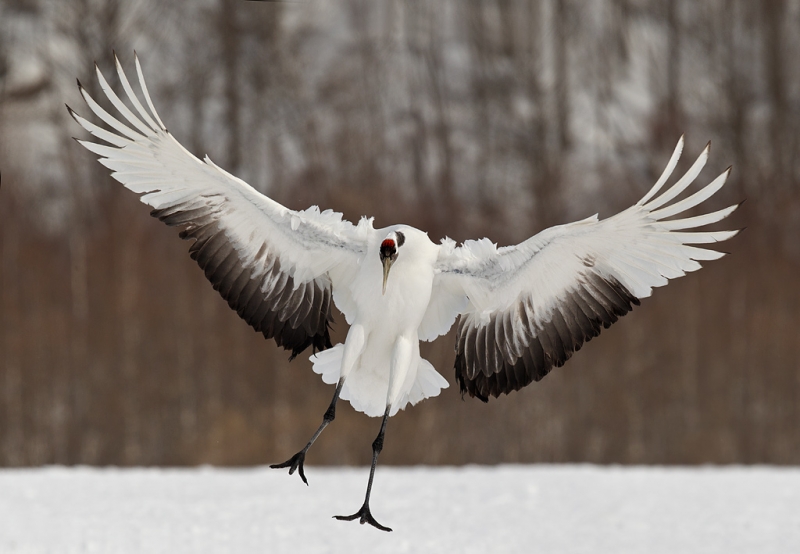
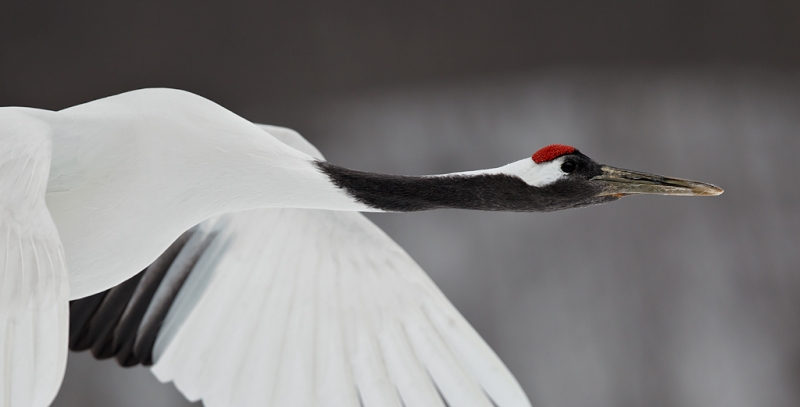
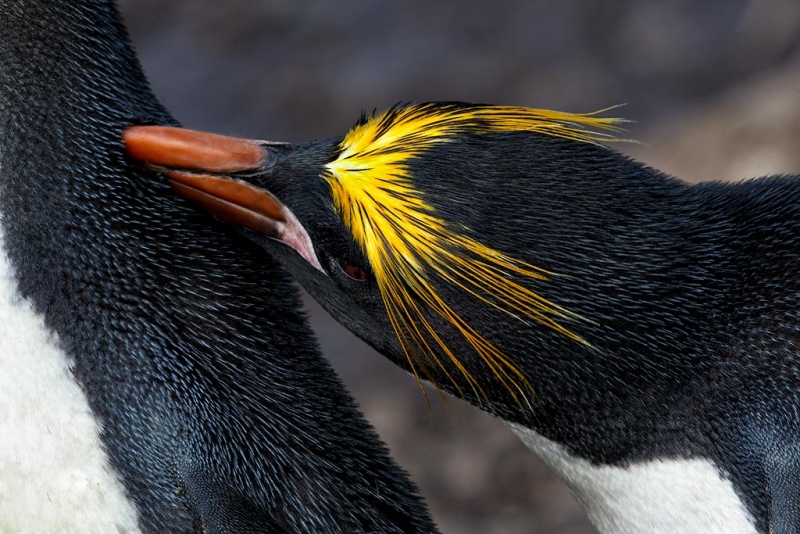
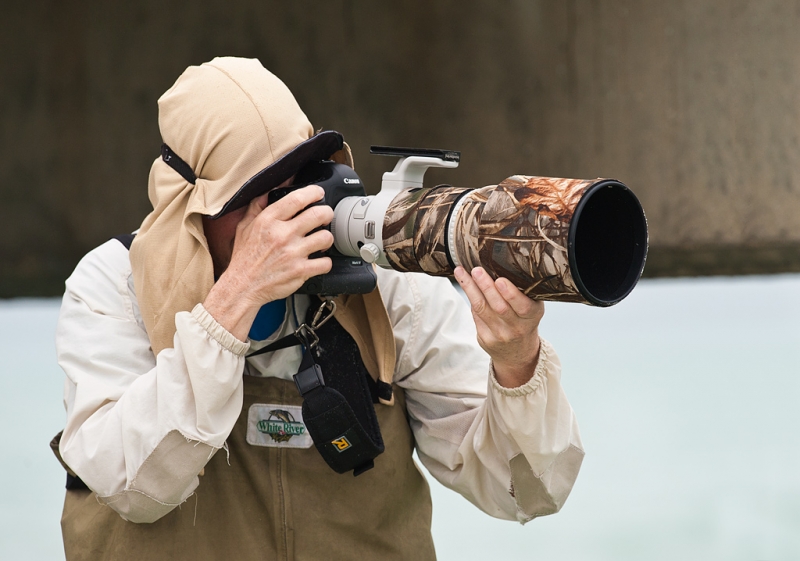
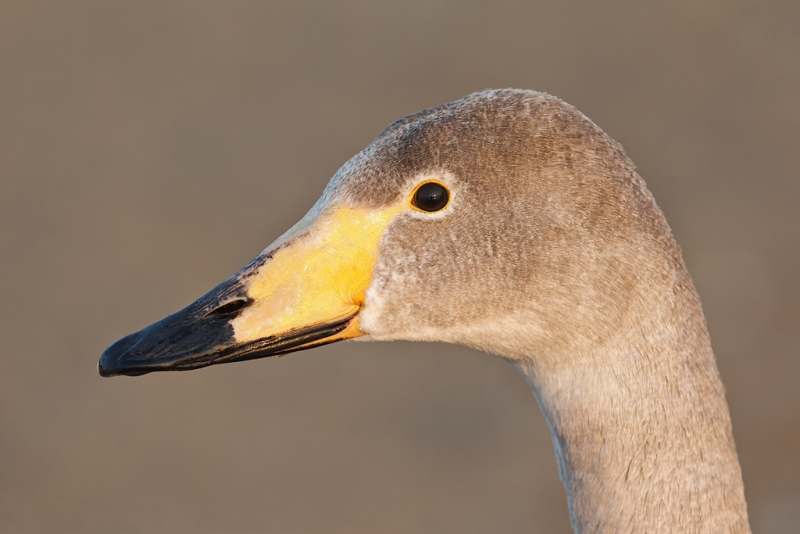
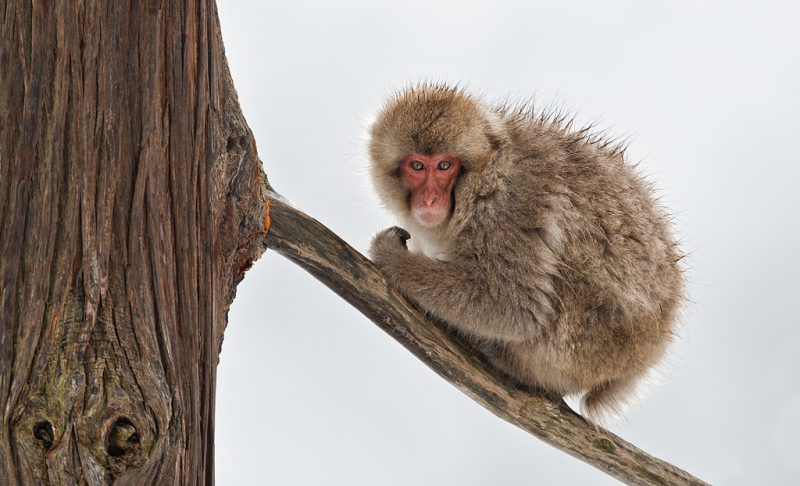
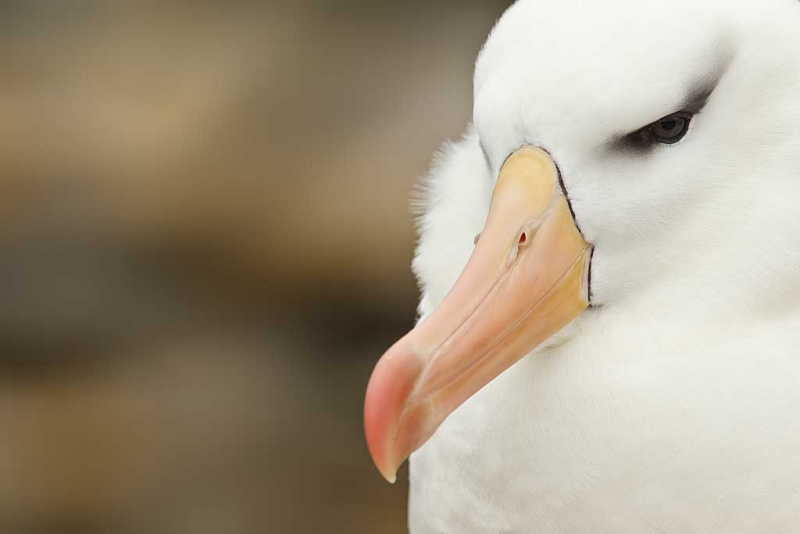
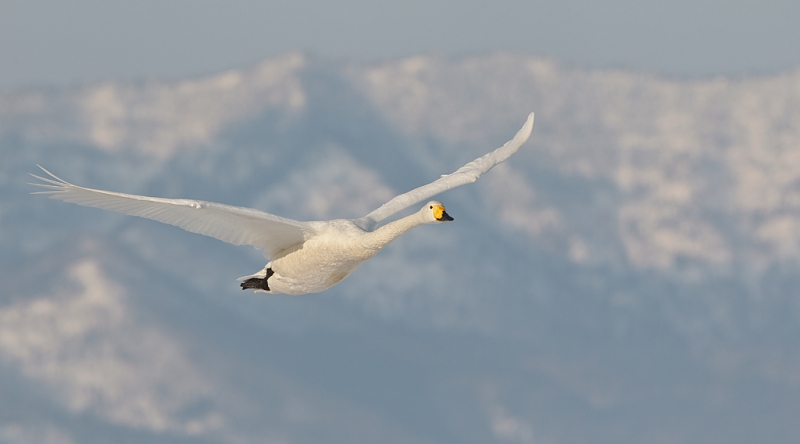
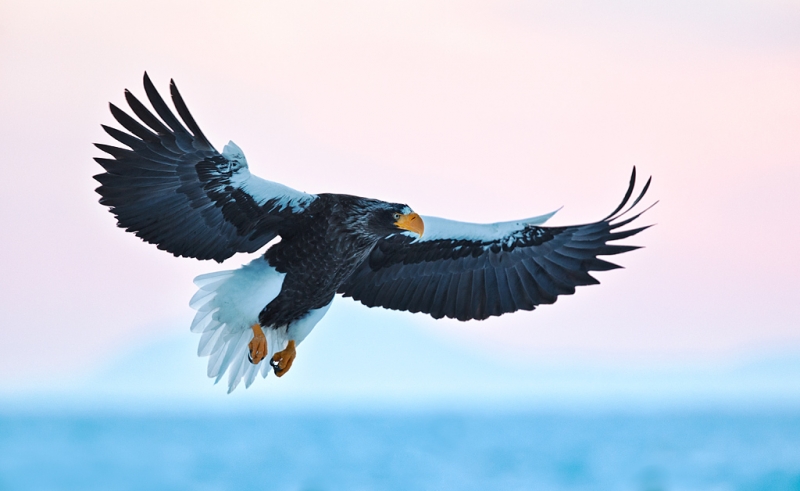













ok, thank you, with travel you mean by air ? , i leave the camera on the lens in a back pack when i am on a bike or walking , that is no risk i assume ??
Any time that the camera is on the lens there is greater risk, and that includes when it is in a backpack.
hello, is it normal that there is a little bit of play in the connection between camera , extender and lens ?
Quite normal, especially as the gear gets older. Best to never travel with your camera on a big lens as that screws up the mounts…..
Enjoy your comments. I have the opportunity to purchase a used 300mm 2.8L IS at $4200 or a new 300 2.8L IS II at around 7200.
I used a CPS version of the original 300 2.8 IS and loved it.
Questions:
What is better about the version II of this lens?
And if I got the previous version and added a 1.4x III would that be as good (for focusing and sharpness) and the version II with the 1.4 X III?
I guess my question is really, is there a significant sharpness difference (used by the same photog!) and is there a focusing difference between the two versions of the 300mm f2.8L IS?
Obviously there is a price difference.
Thanks for any suggestions.
Lynette
Both are killer sharp. The II version features 4-stop IS which is mind-blowing. I was hand holding wit on the trip with both TCs at silly slow shutter speeds and getting sharp stuff. The II version is supposed to focuc more accurately with the Seires III TCs than the old version and I would not bet against that as I have made a ton of killer flight images. See the blog and do a search :). The newer version is slightly lighter but, you cannot remove the tripod collar. That is a huge error by Canon. If you go for the 300 II, please use our B&H link or e-mail me for the link. 🙂 thanks, artie
Tom,
I certainly wouldn’t trust the Black Rapid with 300mm f/2.8. I had one of those drop my 7D and much lighter 70-200 f/2.8 on concrete in Panama causing about six hundred dollars worth of damage to the camera. Somehow the lens survived. Nor was this the first time the Black Rapid failed me, just the first time the camera was actually damaged. I really should have learned my lesson and thrown that strap in the garbage the first two times it dropped my camera on the ground, but since those times the camera survived without any noticeable damage I shrugged it off. 🙁
As I have said before, as long as you check to see that the screw is firmly seated you will avoid any problems.
Art – A few months ago I purchased a Black RApid RS-7 strap. I use it with my 7D and a Canon 100-400 and a Canon 300 f4.0. I love the strap. It is a great product. I recently ordered a Canon 300 f2.8 and intend to use it with a 1.4x extender. Because of the increased weight of the 300 f2.8, is the Black Rapid strap still safe to use without causing undue stress on my 7D? Thanks
I have used the RS-7 with my 300 2.8 many times without a problem.
Can anybody tell me where to get a chart on using thenew Canon 300 MM Mark II
Using the 1.4 extender
Using the 2X extender
A chart that will tell me if it as 4.5 or 5.6
I saw that chart a long time ago but I’m not able to find it
I just bought the new Canon 300 MM plus the 1.4 III & the 2X III
Peter peteanddotsr@sbcglobal.net
No chart needed. You lose one stop effective aperture with the 1.4X TC and two stops with the 2X TC. With the 1.4X TC the 300mm f/2.8 becomes a 420mm f/4 lens and with the 2X it becomes a 600mm f/5.6. See upcoming blog posts.
arhur , i see in your picture above with the 300m f2,8 that you use some strap to carry the 300mm , what is the brand of this and model ?
Howdy VBE, The strap is a Black Rapid RS-7. I love it to death. You can learn more or purchase one here.
thanks arthur, i think i will go for the 1 D mark 4 as i shoot only birds .
I think that that is an excellent choice.
i am planning to use a new canon 300mm f2,8 II lens together with a 2x extender most of the time; now i am between a 7D or a 1D mark 4 camera , witch one should i take ?? I am leaning towards a 1D mark 4, for the AF speed and maybe better quality for cropping afterwards
greetings
Mist serious photographers prefer Mark IV files to 7D files by a mile. Faster AF acquisition with the 1DIV which is also more rugged. The 7D is lighter, and offers greater magnification with more pixels on the subject. I’d go for a Mark IV myself.
I thought I would chime in a little here. I have used the new 300 for about two weeks now. I am a huge lover of 300mm f2.8 lenses. Shooting in the jungle here it is a must in my opinion. It really kills the older 300 IMHO.
1: I am amazed at the quality of the pics with a 1.4.
2: With my 7D I was not just thrilled with BIF, now with the new 300 it is amazing how much better the AF is. My keeper rate has tripled. Huge improvement for me. I can only image how it is on a mark1V. This one kinda threw me?
3: Light weight and mode 3 is a killer combo for me. I am seriously thinking of the new 500 for these features.
Great thread, thanks for sharing Mr. Morris.
How much improvement do you find this lens relative to a 400f/4 DO, given a 7D body and primarily handheld use? It is heavier.
From what I’ve heard from you and others, it’s better but how much better? Will it autofocus as fast with a 2X as a 400 f/4 DO will with a 1.4X? Or as fast with 1.4X as the 400f/4 DO will do without any converter?
Is it sharper at similar focal lengths? How much sharpness do you lose by putting a TC on? (The sharpness loss on my DO from a 1.4X is noticeable.) How much sharpness do you gain from the more modern IS?
Ultimately the question is whether it’s worth the extra $3000 or so it would cost me to upgrade after selling my DO.
Elliote, You have asked a host of difficult and pretty much unanswerable questions :).
I far prefer the 300 f/2.8 L IS II to the 400 DO.
#1: “How much better?” Unaswerable…
#s 2 &# 3: Will it autofocus as fast with a 2X as a 400 f/4 DO will with a 1.4X? Or as fast with 1.4X as the 400f/4 DO will do without any converter? Probably? Possibly? I have no way of measuring such things and can only make educated guesses. Same with anything else.
#4: “Is it sharper at similar focal lengths?” To my eye yes. But who is takin the images??? But remember thare are still folks around who claim it is not possible to create a sharp image with any teleconverter….
#5: How much sharpness do you lose by putting a TC on? (The sharpness loss on my DO from a 1.4X is noticeable.) The off the shelf answer is 14% with a 1.4X and 28% with a 2X but I am able to make professionally sharp images, at least sharp enough to pass the “Pen Test,” with either teleconverter and any L lens. But heck, that’s me. You lose some sharpness for sure but the better your technique the sharper your images will be. How can anyone know “how much”?????
#6: How much sharpness do you gain from the more modern IS? No clue. How could anyone possibly answer that question?
#7: Ultimately the question is whether it’s worth the extra $3000 or so it would cost me to upgrade after selling my DO.
As I have said here often, how can I possibly know if something is “worth it” for you or anyone else…..
For me, lens and TC sharpness is an over-rated topic. Folk should be concentrating on learning to create sharp images with all their gear by practicing and by improving their sharpness techniques….
I just bought the 300mm ll. I use with the 7D. It is a worthy upgrade for me. I did a quick informal check. The IS is where this lens makes a huge difference for me.
Mazel tov. I just broke down and purchased my very own 300 f/2.8L IS II today!!!
You will need a Wimberley P-30 plate. It will not rotate as it has a flange; mount it backwards for best balance. You will also want a Lens Coat to protect both the finish and your investment.
I will make sure I click on your links when I get back to America. Thnk’s for you very good reviews. I am now getting excited about the new 500, if it is as good an update as the 300? My gosh.
I loved the original 300 and the 500. But this new 300 is just razor sharp and just a joy to us overall. Canon slam dunked this one. The best lenses in the World in MHO.
Thanks a stack! Using our B&H links provides significant income that allows us to keep the free information coming. And it never costs anyone a dime. If you get to FL look us up!
Recommended reading for all who would like to learn a ton more about topics related to this lens on the BPN thread here.
If one uses the 300 f/2.8II + 2X with the 7D, how do you think the autofocus will perform? As I recall, the 2X converter slows down the autofocus by a significant amount; and you’ve previously said you don’t like the 70-200 f/2.8 with a 2X on a 7D for that reason (and contrasting with the 1D Mark IV’s faster autofocus). Or has this changed with the new 2X III converters and new super telephoto lenses? I know they were supposed to work better together than the old lenses and TCs. Maybe autofocus is not as crippled any more?
For flight you will need to pre-focus manually every time. I would think that it would be OK. I have some e-mails out on AF with the 7D specifically as compared to the 1D IV. The Series III TCs have no impact on AF speed, only on accuracy (according to Canon).
You can learn a ton by reading this entire BPN thread carefully and I will be posting additional info from Canon there first and possibly on the blog as well. The more relevant comments are at the beginning of the thread.
2012 will be the year of my first Canon Supertelephoto lens. Currently have 100-400 and will keep that for more portable option. I have 3 main candidates up for consideration: 600mkII, 400mkII or 200-400f/4 (if it comes out in 2012). 300 mkII is also just behind the other 3 and even the 500mkii or mki is on my radar. I’m not going to get more than one for obvious financial reasons. I just don’t know what I’ll find the most useful. Will also get 1.4 and 2x mkIII converters for whatever one I get (unless its the 200-400).
Artie (and any others), do you think the 600mkII is the best just for the reach? Or maybe the 400 as the 2x would still AF on my 5Ds. I would mostly be shooting on a 5Dmk2 and 5Dmk3. I am looking for a 1D4 once used prices come down to the $3000 mark but who knows when that will be. So hard to decide when you are going to drop $10000 on whichever one it ends up being.
Where do you live? What do you like to photograph? Is the weight of your gear a concern?
Hi Artie,
I live in Whitehorse Yukon Canada. I would be using the lens to shoot birds sized from ducks to bald eagles and swans. I would be using the lens on my Really Right Stuff TVC 34L tripod and hope to purchase the Mongoose 3.6 to use with my new lens (I’ve already contacted your BAA store about shipping options on the Mongoose). I also want to take the lens on some of my travels. Upcoming travels that are in the planning stages are trips to Costa Rica (where I think the f/2.8 of the 400 might be better), Antartica/S. Georgia (still a year a way at least) where I’m not sure what would be best. I also will take the lens to the Canadian Grand Prix du Montreal Formula 1 race this June.
Right now I use the 100-400 to shoot birds and F1. I used it on an 8 day cruise last April in the Galapagos and came back with what I feel were amazing photos. I’ve been very happy with the IQ of my 100-400. It is a very good copy and was sharp on my 7D and now even sharper on my 5D2. I also shoot a lot of landscapes, northern lights and some macro.
So with that added info, what do you think?
Forgot to add that weight is not a huge issue around home and even while travelling I think I can manage. I also forgot to say that the only things I don’t like about the 100-400 is the slow aperture f/5.6. I need more light!
For photographing at home I am positive that the 600 L IS II would be best for you. And unless the birds in Costa Rica are tame and close then you would need at least the 1.4X III TC and that would negate the speed advantage of the 400 f/2.8 L IS II.
The 600 II will do great on a Mongoose M3.6.
The lens is not yet available for pre-ordering from B&H. To thank us for the work that we do here on the blog, on the Bulletins, and in answering 100s of gear related e-mail questions please, please, please remember to start your search with our B&H link:
http://www.bhphotovideo.com/?BI=6633&KBID=7226
Or e-mail me for the direct product link once the lens is available. Thanks!
Although the lens is not possible with my budget, it certainly has helped you to make some super images. I can only presume that the blueness of the ice is reflecting off the Steller’s Eagle’s white plumage. That image is just magic!
Thanks Cheapo. Pre-dawn light is always BLUE.
I never realised that. Now I’m even more with Benjamin Franklin’s idea that we should all get up with the sun and go to bed when it’s dark. Haha!
Have you tried the Kinesis X-Harness? Pat and I use it a lot with the 300 and 500. It takes the weight off your neck and puts it on your shoulders like a pack. The camera hangs in front at chest height, ready to lift and shoot.
http://www.kgear.com/store/h/strap-harness/h717.html
Have not. If I’d been using it next to the fishing pier the lens would have been in the water :). See you guys at the Morro Bay IPT 🙂
Artie:
I loved the macaroni penguin image! Very cool.
Adam
Thanks Adam. Me too :).
Artie, thanks for the great review, and congrats on the wonderful photos–I’d say at least half the credit goes to your skills, the other half to this great lens. I am enjoying my copy of this lens, thanks to your recommendation. Regarding your “only wish” about the lens collar, I use mine to attach my Black Rapid RS-7 camera strap, rather than connecting that strap to the camera body–less strain on the lens to camera mount, when hiking and hand-holding the lens.
I assume you are returning your 300mm lens as an economy move rather than some other reason. Or is there another reason?
Thanks,
Tom
YAW. The 300 is a loaner from Canon Professional Services. Since I am buying a 5D III, the 500 II, probably the 600 II, at least one 1DX, and probably a brand new Mark IV in the near future, I may just borrow the 300 II when I need it :).
As for the skill; I do not have much other than a good eye for composition and even that was learned and developed. I do work hard and I am determined however…..
Artie,
Nice piece on that lens. I’m saving my money.
Are you going to sell yours as you promised before setting out for the Southern hemisphere?
Joel Haas
Not mine to sell as it is a loaner. Not sure if I will bring a borrowed 300 II or my new 500 IS II on the Falklands/South Georgia trip….
Art,
I couldn’t agree more with your comments.
I’ve been enjoying great success with the 300mm f.2.8L IS II and v3 Extenders, also using IS Mode 3.
Image quality is way improved over the V1 lens, in particular in combination with the 2x III.
Some example shots with the 2.0x III extender are included in these blog posts:
http://blog.natureimages.info/2012/03/07/observations-on-the-newcanon-ef-300mm-f2-8l-is-usm-ii-lens-plus-ef-iii-extenders/
http://blog.natureimages.info/2012/02/27/barnegat-jetty-trip/
Best,
James Stephens
natureimages.info
Thanks for the links. Wicked harrier images. And nice stuff from Barnegat. If you would be so kind as to add a link to Denise’s Barnegat Jetty Site Guide it would be greatly appreciated.
I never have had a doubt that the 300 II/2X III TC would be a viable hand held combo :). I just have not used it much that way.
I owned the 300 3.8 IS I and always found that I was using the 1.4X on it for most of my bird photography (flight). I sold the 300 and bought the 400 5.6. I found that the one stop loss really wasn’t crucial with the beneficial higher ISO capability of the 7D. I love the 400 5.6, with it being inexpensive and weightless!!!
Great lens. I owned three different ones and loved them. Put that lens on the map as I recall; the “toy” lens. If it works for you, fantastic. I need IS and I love the extra speed.
How does the new 300 II compare to the 70-200 f/2.8 II + 1.4x III? How does the 300 II + 1.4x III compare to the 70-200 f/2.8 II + 2x III? I would expect that in both cases the 300 II would be better but how “poor” is the 70-200 II in comparison?
When the new 500 II and 600 II finally get in your hands and evaluated could you please give the 300 II + 2x III a paragraph of comparison.
Thanks, like your real world equipment evaluations.
Lots of hard to answer subjective questions :). The 300 II focuses faster and is sharper than the 70-200 II with the 1.4X TC. Same when comparing the 300/1.4X with the 70-200/2X. And with the 300/1.4 AF is much, much faster…. How poor? I have made great images with the 70-200 with both TCs…. Including flight. But the 300 is clearly better, faster, sharper. And heavier.
On a tripod the 300 with the 2X is sharp. Not sure if I will ever try that combo for flight. As I do not do any tests, preferring real world photography instead, not sure that I will ever be comparing the big Series II lenses with the 300/2X combo. Especially since I and you already know the answer. See paragraph 1 above :).
And YAW.
I think ‘wrong’ is being a little tough on yourself. Back then,
at that specific time, the 300 probably wasn’t worthy.
But with all of the advancement in the digital world, even
year to year, not only does the equipment evolve, but we
as photographers also evolve…well, hopefully 🙂
So I think a better word might be that you ‘evolved’ in
your thinking on the use of 300.
Doug
We are all learning every day :)!